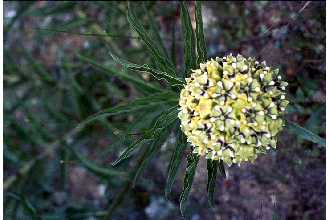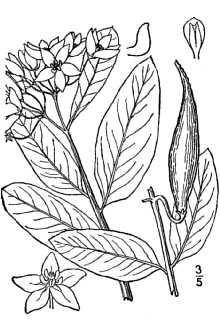Asclepiodora viridis (Walter) A. Gray
Scientific Name: Asclepiodora viridis (Walter) A. Gray

| General Information | |
|---|---|
| Usda Symbol | ASVI11 |
| Group | Dicot |
| Life Cycle | Perennial |
| Growth Habits | Forb/herb |
| Native Locations | ASVI11 |
Plant Guide
Alternate Names
green antelopehorn
Uses
Caution: Poisonous plant. Like many milkweeds, plant parts are thought to be poisonous to cattle, but are rarely consumed. Smith et al. (2000) documents sheep loss to this species. Monarch butterfly eggs are laid on plants in the Asclepias genus. The larvae consume the leaves and the toxins found in Asclepias are also in the larvae and mature butterflies. This provides protection from bird predators. The long silky hairs on the seed were once used in making candlewicks. Other than Monarch butterflies, the plant provides no known wildlife value.
Status
Please consult the PLANTS Web site and your State Department of Natural Resources for this plant’s current status (e.g. threatened or endangered species, state noxious status, and wetland indicator values).
Description
General: Milkweed Family (Asclepiadaceae). Green antelopehorn is a native, perennial forb or herb. Globally, there are 2,000 – 3,000 species in the milkweed (Asclepiadaceae) family. In Texas, there are five different genera in this family, with 35 species in the Asclepias genus. Asclepias viridis is the most common milkweed in Texas ranging from deep east Texas to the Edwards Plateau and typically has wider leaves than Asclepias asperula. They have alternate, entire leaves. The leaf margins are often wavy. Flowers are white and in an umbel, mostly one per plant. Upon close inspection, some rose or purple color is evident in the center of each individual flower (gynostegium). The milky substance that is exuded when a plant part is broken is very sticky, much resembling “Elmer’s glue.” These milkweeds bloom from late spring to middle summer. © Lee Davis USDA, NRCS, Nacogdoches Technical Office Other milkweeds in Texas, such as Asclepias oenotheroides, Asclepias incarnata, Asclepias viridiflora have similar growth habits and flowers, but do not have alternate leaves.
Distribution
Known from Nebraska to Ohio and Texas to Florida. For current distribution, please consult the Plant Profile page for this species on the PLANTS Web site.
Establishment
Adaptation: In Texas, this species appears to prefer loamy, moist soils, but is found on virtually all soil types, except for deep sands and very wet soils. It is quite common on blackland clay. Because livestock avoids the plants, they tend to become more prevalent in some overgrazed pastures. These plants are quite common along roadsides. Cultivars, Improved and Selected Materials (and area of origin) These plant materials are somewhat available from commercial sources. Contact your local Natural Resources
Conservation
Service (formerly Soil Conservation Service) office for more information, Use soil moisture sensors to measure the soil moisture of Asclepiodora viridis (Walter) A. Gray., Look in the phone book under ”United States Government”, The Natural Resources Conservation Service will be listed under the subheading “Department of Agriculture,”
References
Davis, L. 2000. Texas plant fact sheet: Asclepias viridis. USDA, NRCS, Nacogdoches Technical Office #2, Nacogdoches, Texas. Smith, R.A., P. Scharko, D. Bolin, & C.B. Hong 2000. Intoxication of sheep exposed to Ozark milkweed (Asclepias viridis Walter). Veterinary and Human Toxicology 42(6). Abstract accessed 07 June 2001. <http://www.napcc.aspca.org/vhtox/dec00/ozark.htm> USDA, NRCS 2000. The PLANTS database. <http://plants.usda.gov>. 001206. National Plant Data Center, Baton Rouge, Louisiana.

